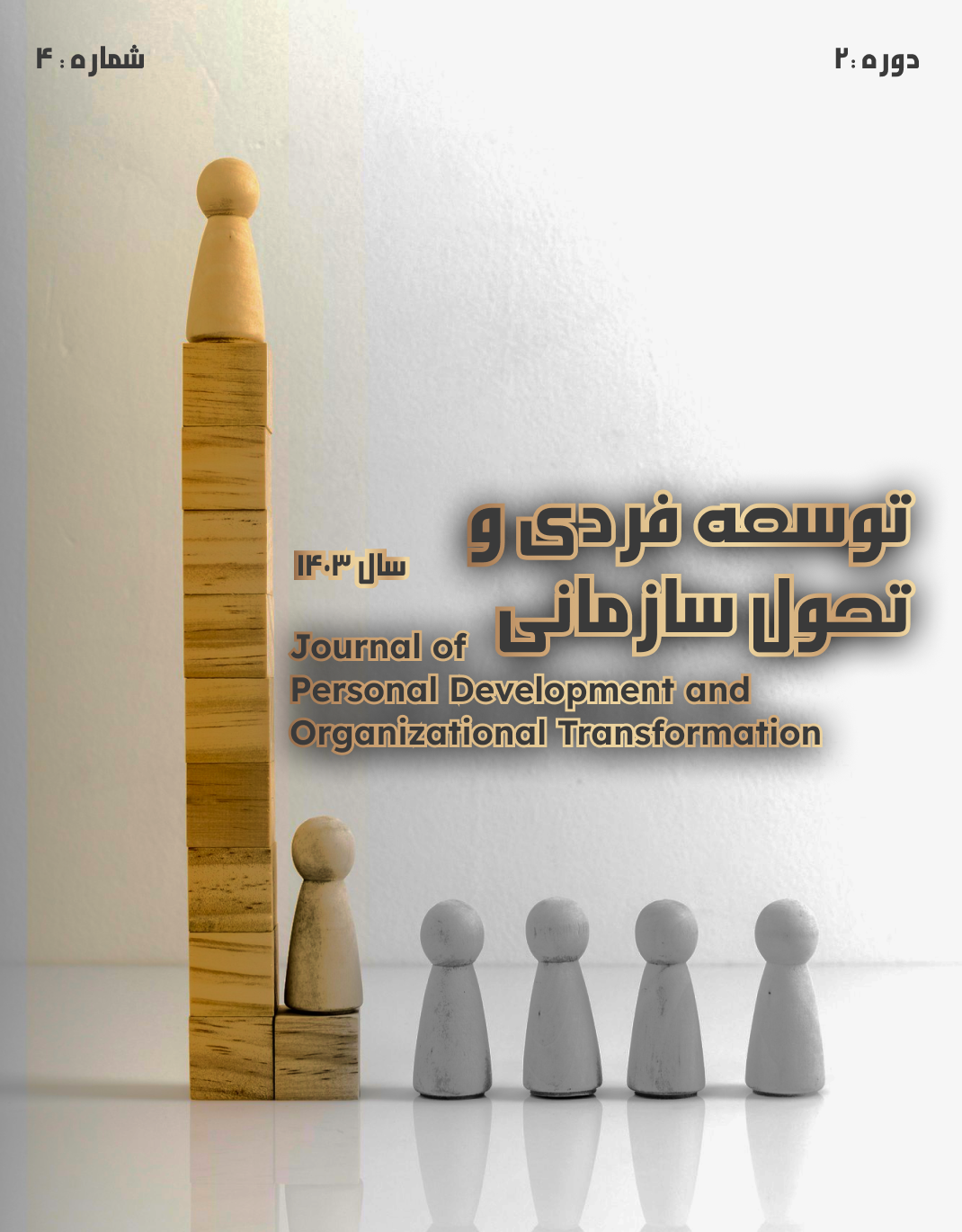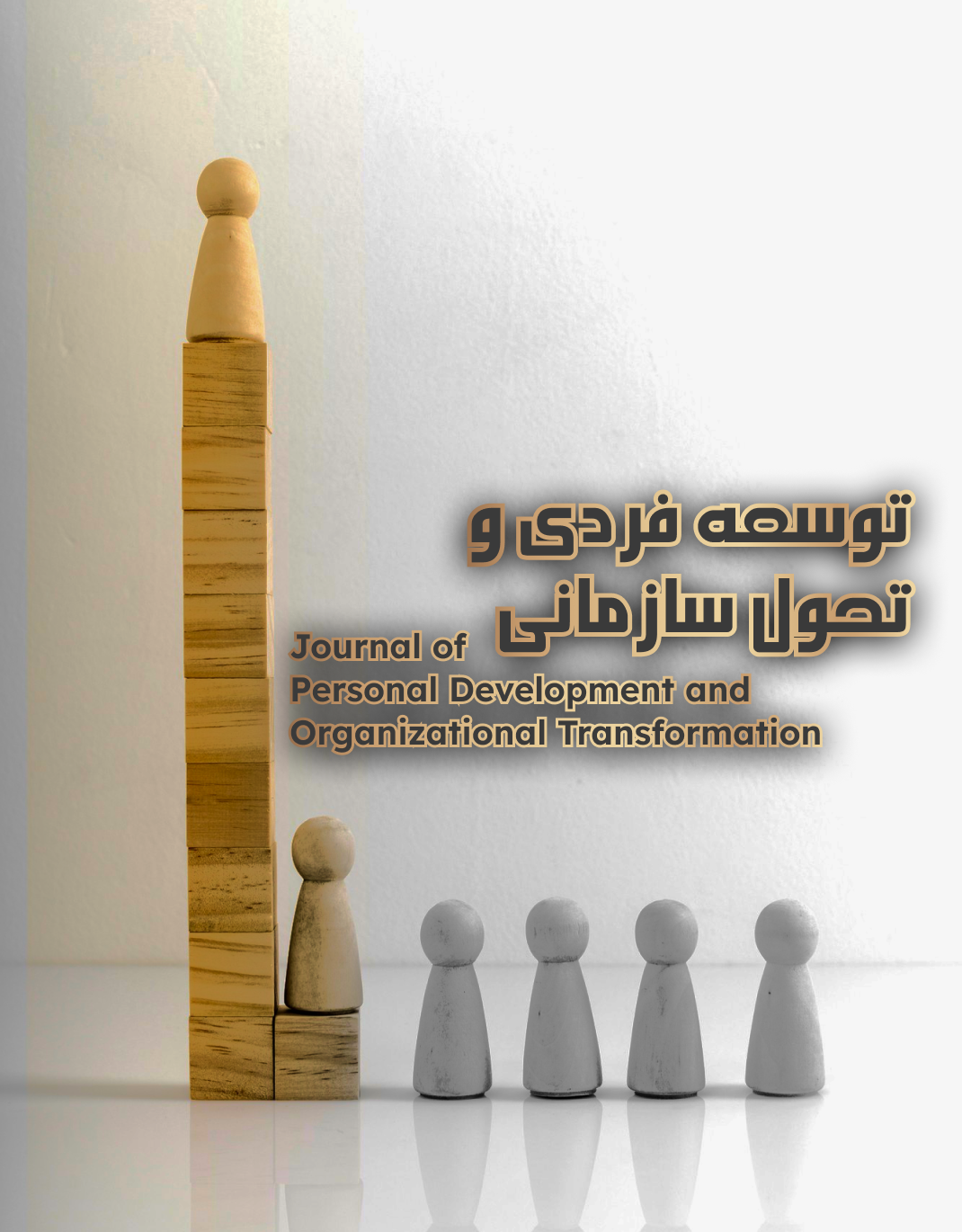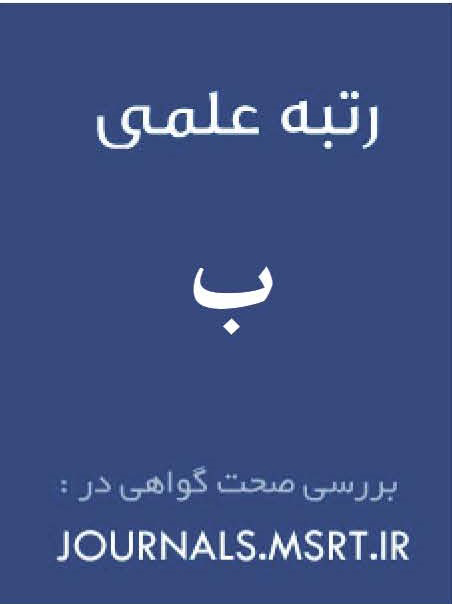Presenting a Succession Planning Model for Executive Managers of Bank Melli Iran in Khorasan Razavi Province Using a Grounded Theory Approach
Keywords:
Succession, managers, causal factors, interventionists, background conditions, strategies, consequences, outputsAbstract
The aim of this study is to develop a succession planning model for executive managers of Bank Melli Iran in Khorasan Razavi Province. From a research objective standpoint, the study is applied in nature; in terms of data type, it is qualitative; and methodologically, it follows a systemic (paradigmatic) grounded theory design. The research population consists of human resources experts with doctoral degrees who possess authorship, publications, research background, and practical experience in this field. Using a theoretical purposive sampling method, 15 experts were selected for interviews. The data collection tool was a semi-structured interview, through which the dimensions, components, and indicators of the succession planning model for executive managers of Bank Melli Iran were formulated. To construct the interview framework, in-depth interviews with the experts were conducted initially. Subsequently, through open coding, relevant indicators were extracted, which were then categorized into components and indicators via axial coding. These were sent to the 15 experts for validation, and using selective coding, the components and indicators were identified and finalized through interviews and brainstorming sessions. As a result, 5 dimensions, 18 components, and 106 indicators were finalized for the succession planning model targeting executive managers of Bank Melli Iran in Khorasan Razavi. After final approval and prioritization by the experts, the dimensions, components, and indicators of the model were illustrated, and the model underwent an additional round of validation by experts.
Downloads
References
Abbaspour, A. (2022). Advanced Human Resource Management. Tehran: Samt Publishing. https://scholar.google.com/citations?user=1DX0jRoAAAAJ&hl=en
Abtahi, S. H., & Abasi, S. (2022). Empowering Employees and Delegating Work and Authority. https://mjms.mums.ac.ir/article_24326_1b677a32d69d63345f6e80b8b8ff3f50.pdf
Ahmadzadeh, M. A., & Mahdizadeh, A. A. (2022). Designing a Comprehensive Model for Succession Management in the Banking System (Case Study: Agricultural Bank). Iranian Political Sociology(23), 1280-1299. https://jou.spsiran.ir/article_159393.html?lang=en
Chavez, J. (2018). The case for succession planning. Strategic Finance-Careers, 24(3), 3-21. https://journals.iau.ir/article_678424.html
Essman, S. M., Schepker, D. J., Nyberg, A. J., & Ray, C. (2021). Signaling a successor? A theoretical and empirical analysis of the executive compensation-chief executive officer succession relationship. Strategic management journal, 42, 185-201. https://doi.org/10.1002/smj.3219
Friedman, S. D. (2018). Succession Planning in Large Corporations: Characteristics and Correlates of Performance. Human Resource Management, 25(2), 191. https://doi.org/10.1002/hrm.3930250204
Goldsmith, M. (2023). Succession Planning. Tehran: Arkan Danesh Publishing. https://www.shrm.org/topics-tools/news/how-to-plan-for-your-own-succession-by-marshall-goldsmith
Jan Ahmadi Gol, M., Rezai Far, H., & Hakim Pour, H. (2023). Meta-Analysis of Factors Affecting Succession Management in Government Organizations. Public Management Research, 16(60), 191-218. https://jmr.usb.ac.ir/article_7774.html?lang=en
Khazaei, S., Vosooghi, A., & Shah Mohammadi, M. (2022). Succession of Human Capital (From Model Presentation to Implementation). Tehran: National Defense University Publishing. https://ketab.ir/book/33f0823a-997d-4432-bcc7-7b7ed80699e0
Montaghemi, B., Ganjouei, F. A., & Sajadi Hazaveh, S. H. (2023). Designing a Competency-Based Succession Model for Sports Managers Using a Qualitative Approach. Strategic Studies in Sports and Youth, 22(60), 47-60. https://faslname.msy.gov.ir/article_588_1ee9169ac35a91658cf9b32c79703bca.pdf
Rothwell, W. J. (2019). Effective succession planning: Ensuring Leadership Continuity and Building Talent from Within. New York: American Management Association. https://hcmindonesia.files.wordpress.com/2012/12/9b-successionplanhandbook.pdf
Shahabi, M. (2024). Presenting a Succession Model in Government Organizations Using Thematic Analysis. Scientific Journal of New Research Approaches in Management and Accounting, 8(30), 79-97. https://journals.iau.ir/article_688249.html
Tootian, S., Asghari, H., & Rostami, M. (2020). Presenting a Model of Succession Barriers with a Mixed Approach in the NAJA Command Headquarters. Quarterly Journal of Police Studies, 173-200. https://ensani.ir/fa/article/423719/
Villalpando, D., Campbell, R. J., & Pérez-Nordtvedt, L. (2025). The Time to Succeed: CEO Appointment Phase Entrainment and Post-Succession Firm Operational Performance. SAGE Journals. https://doi.org/10.1177/01492063241311853
Wilson, P. M. (2021). Succession Planning Strategies at the Ministry of Education in the Bahamas, A Case Study. Open Journal of Business and Management, 10, 3142. https://doi.org/10.4236/ojbm.2022.106157
Downloads
Published
Submitted
Revised
Accepted
Issue
Section
License
Copyright (c) 2025 Mahmod Barati (Author); Mahmod Ghorbani; Abbas khorshidi (Author)

This work is licensed under a Creative Commons Attribution-NonCommercial 4.0 International License.







